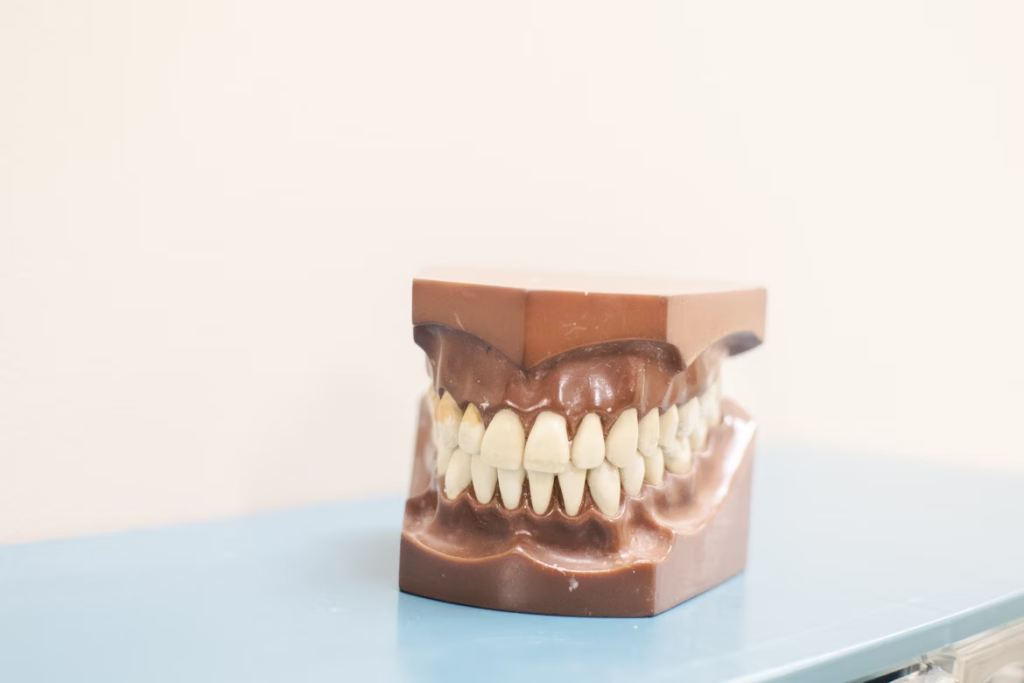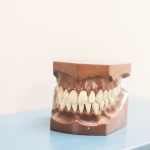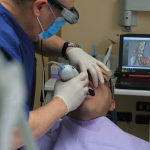rly diagnosis is what allows patients to stay ahead of more serious problems. The importance of early detection in oral health issues lies in its ability to prevent minor concerns from turning into major complications.

Whether you’re visiting a general practice or a specialised dental group, regular dental check-ups are more than routine maintenance — they’re opportunities for early identification of changes in the mouth, gums, teeth, and jaw. These early interventions save time, cost, and unnecessary discomfort in the long term.
Why Early Detection Matters in Dentistry
Preventing Disease Progression
Cavities, gum disease, and oral infections do not happen overnight. They begin with subtle changes — a small spot on a molar, mild gum irritation, or increased sensitivity. If identified early, these issues are easy to treat and often reversible. If left undetected, they can spread and affect surrounding tissues, bone, or even overall health.
Early detection prevents unnecessary tooth loss, pain, or more invasive procedures such as root canals, extractions, or oral surgery.
Lowering the Risk of Systemic Complications
Oral health is closely linked to general health. Gum disease has been connected to cardiovascular problems, diabetes, and respiratory issues. When oral infections are not treated promptly, bacteria can enter the bloodstream and impact organs beyond the mouth.
Detecting and managing oral health problems early reduces the chance of systemic effects and supports overall wellbeing.
The Role of Regular Dental Check-Ups
Routine Examinations and Screening
Check-ups every six months allow dentists to identify early signs of decay, gum inflammation, oral cancer, and structural damage. Dentists examine more than just your teeth — they assess jaw movement, tongue appearance, and any abnormalities in soft tissues.
Advanced tools such as digital X-rays, intraoral cameras, and early detection dyes help identify problems before symptoms even arise.
Professional Cleanings
Tartar cannot be removed by brushing alone. During regular cleanings, hygienists remove plaque and tartar build-up, lowering the risk of decay and gum disease. These appointments also provide the opportunity to monitor any changes between visits.
In addition to cleaning, professionals guide patients in refining their home care routine for better long-term outcomes.
Common Oral Health Issues That Benefit from Early Detection
Tooth Decay
Tooth decay starts with demineralisation of enamel and can progress to painful cavities. Small areas of decay often have no pain and go unnoticed until they reach deeper layers.
When caught early, tooth decay can be treated with a simple filling or even reversed with fluoride. Advanced decay may require a crown, root canal, or extraction — which are more expensive and time-consuming.
Gum Disease
Gingivitis is the first stage of gum disease, marked by red, swollen, or bleeding gums. If treated early, it is reversible with improved oral hygiene and professional cleaning.
If ignored, gingivitis can develop into periodontitis, a condition where the gums pull away from the teeth, leading to bone loss, loose teeth, and eventually tooth loss.
Oral Cancer
Oral cancer can affect the lips, tongue, cheeks, gums, or throat. Early signs may include sores that don’t heal, red or white patches, or unexplained lumps. In its early stages, oral cancer is highly treatable, with a significantly better prognosis.
Routine screening during check-ups allows dentists to detect warning signs early. When identified quickly, treatment is less invasive and more successful.
The Link Between Early Detection and Cost Savings
Reducing the Need for Complex Treatments
A small filling costs significantly less than a root canal and crown. Similarly, scaling and polishing to address early gum disease are more affordable than periodontal surgery or bone grafting. Preventive care reduces financial burden and long-term dental expenses.
By investing in routine visits and early treatment, patients avoid the high cost of extensive dental work.
Minimising Time Away from Daily Life
Major procedures often involve multiple visits, recovery time, and temporary lifestyle changes. Early detection helps patients avoid interruptions to work, school, and daily activities.
Treating issues early usually means shorter appointments, less discomfort, and quicker recovery.
Technology That Aids in Early Diagnosis
Digital X-Rays
Digital radiographs offer clearer images with lower radiation exposure. They help dentists detect decay between teeth, abscesses, cysts, and bone loss at stages not visible to the naked eye.
Because they can be viewed immediately, treatment planning begins without delay.
Intraoral Cameras
These small cameras give a detailed view of the mouth and allow both dentist and patient to observe issues in real time. They can identify hairline cracks, early wear, and plaque build-up in hard-to-see areas.
Patients benefit from seeing the condition of their teeth, leading to better understanding and improved compliance with treatment recommendations.
Supporting Early Detection at Home
Monitoring for Subtle Changes
Patients should be aware of changes such as sensitivity to hot or cold, bleeding during brushing, or unusual mouth ulcers. These may be early signs of underlying issues.
Performing self-checks monthly and being attentive to any discomfort or visible changes ensures issues are addressed promptly.
Maintaining a Consistent Oral Care Routine
Good hygiene supports early detection by reducing inflammation and making signs of disease easier to spot. Brushing twice a day, flossing daily, and using fluoride toothpaste are key parts of an effective routine.
Limiting sugar intake and drinking plenty of water also supports better oral health and a cleaner environment for the teeth and gums.
Children and Early Detection
Supporting Healthy Development
Children benefit from early dental visits that monitor jaw growth, tooth eruption, and early signs of decay. Detecting alignment issues or enamel defects early makes orthodontic or preventive treatment easier and more successful.
Fluoride treatments and sealants applied during childhood can protect teeth from cavities and reduce future dental needs.
Forming Lifelong Habits
Early detection in childhood not only prevents problems — it builds trust with dental professionals and encourages regular care into adulthood. Positive experiences at the dentist reduce fear and increase commitment to good habits.
Paediatric dental visits also give parents the chance to ask questions and receive advice tailored to their child’s oral development.
Early Detection in Older Adults
Managing Age-Related Risks
Ageing increases the risk of dry mouth, gum recession, and tooth wear. Regular check-ups help detect these issues before they affect quality of life. Dry mouth can lead to faster decay, while recession exposes tooth roots that are more vulnerable to damage.
Routine monitoring also identifies ill-fitting dentures, oral cancer symptoms, and bone loss in those with missing teeth.
Supporting General Health
Older adults often manage medical conditions like diabetes or heart disease that are closely linked to oral health. Identifying dental issues early helps prevent complications and supports overall wellbeing.
A dentist who understands the needs of older patients can tailor care to manage both oral and systemic health risks.
Frequently Asked Questions
How often should I visit the dentist for early detection?
Most people benefit from a dental check-up every six months. However, some may need more frequent visits based on their risk level and past dental history.
Can problems develop without symptoms?
Yes, many oral health issues begin silently. Decay, gum disease, and even oral cancer may not cause pain or visible changes until they are advanced.
Are children too young for early detection checks?
No, children should visit the dentist by their first birthday or when their first tooth appears. Early visits set the foundation for healthy habits and catch problems before they worsen.
Conclusion
The importance of early detection in oral health issues cannot be overstated. Identifying changes in the mouth early helps prevent the need for complex, costly treatments and protects your general health. Whether you’re managing ongoing dental concerns or simply attending routine check-ups, early diagnosis plays a central role in long-term wellbeing.
Choosing a trusted dental group for ongoing care ensures access to the latest technology and expert assessment. With regular monitoring, consistent home care, and attention to small changes, patients of all ages can enjoy stronger, healthier smiles for life.
Investing time in prevention now will save discomfort, time, and expense later. Early detection truly is the key to preserving your oral health and your quality of life.











Leave a Reply